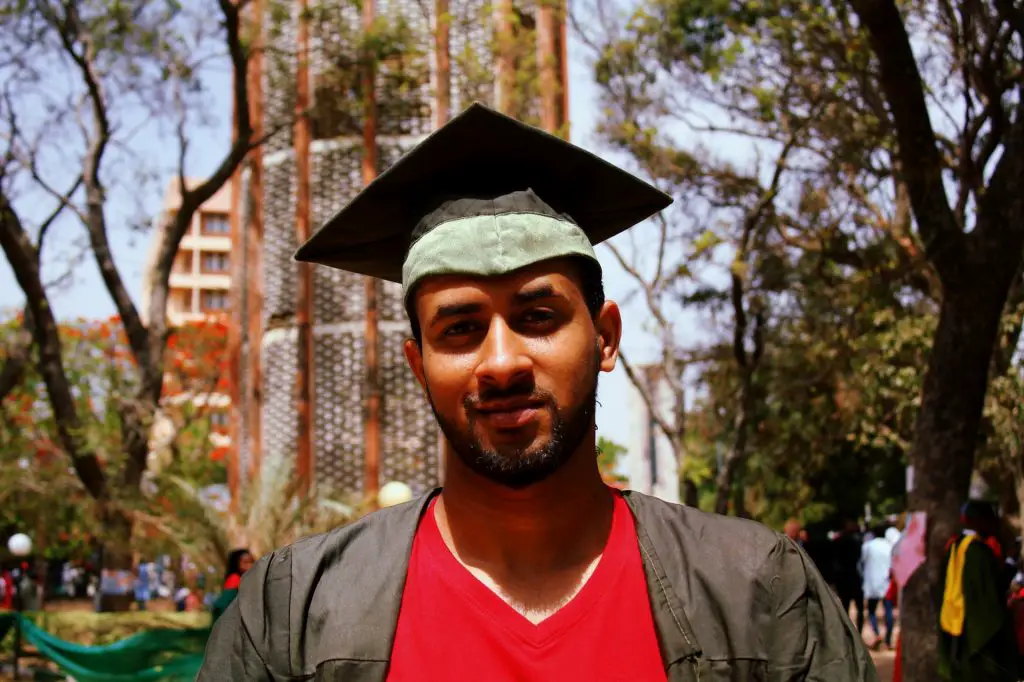Easiest Law Schools to Get Into
Here is a list of 9 easiest law schools to get into. These schools have high acceptance rate and low admission requirements requirements. Some of them are located in major cities, which is a good thing. Because large cities offer better internship and employment opportunities.
For the sake of conversation, I assume that when you are seeking the easiest law school to get into, you mean that one that is easy to get into. Not necessarily the one that is easiest to graduate from.
Although, these two concepts usually go hand in hand – easiest law school to get into, usually is also easy to graduate from.
OK, we talked about #lsat and #lsatprep a little bit, now let’s talk more about #futurelawyer dreams and #prelaw issues.
As I said, the easiest way to get into law school is to find law school which accepts people with low GPA and low LSAT.
Let us talk about what is an easy law school to get into in the event you did not make perfect GPA and your GPA is not stellar either.
In fact, there are a number of law schools easy to get into. Because, there are just many of them in general, period.
Let’s assume, you definitely made up your mind that for some reason you want to go to law school and to become a successful shark lawyer (all other reasons we do not consider right now).
And you want an easy way to get into law school, searching the internet on how to get into law school easily.
Well, for that, I am going to list here a few law schools in the US which have a pretty low bar for applicants.
Unaccredited Law Schools – a Controversial Choice
Unaccredited law schools are definitely law schools that are easy to get into. Unaccredited by American Bar Association that is. Because all law schools (and colleges) exist for business purposes – to make money – unaccredited law schools accept pretty much anyone who pays. Their admission standard is very low.
But they also have awfully low bar passage rates and very high law school drop out rate. I have written articles on this topic and you can find them in this blog. I will not go into other details of why you should not go into unaccredited law school – you can read that in my blog.
In my opinion, going to unaccredited law school makes sense if you have a super low GPA and LSAT score, and can go there for dirt cheap. Maybe you just want to see if you can learn the law and maybe prepare for accredited law school.
Otherwise, try to pump up your LSAT score and go to one of the ABA-accredited law schools.
How to Get in the Law School with a Low GPA – Choose Fourth and Third Tier Law Schools
I wrote an article about law school tiers on this blog – it is called “Law School Tiers Explained for Perfect Career”. Fourth tier law schools are at the bottom of the pool and usually have more lax admission requirements than higher-tiered law schools. There is no huge difference between the fourth and third tiers, in my opinion. So, look at the cost first – try to go for as cheap as possible.
Second – look at law school bar passage rates. If those rates are decent – that’s a plus in your analysis. You want to be able to pass the bar and try to work as an attorney. Hopefully, not the sleazy type.
Get prepared to the fact that in low-tiered law schools your GPA will be lower than if you went to high-ranked ones because this is how they grade – low tier law schools have a more difficult curve.
Also, keep in mind that many of these low schools are located in smaller towns, where it is harder or impossible to find a job.
With all low-tiered law schools always consider taking a bar exam prep course after graduation, because such schools usually have a lower bar passage rate.
Hint: even if you fail the bar exam after law school and bar review course, it may make sense to take the bar review course again. This time you may comprehend more information useful for the bar exam. If cost is the issue, you may take a cheaper bar review course the second time.
Do not give up on the bar until you tried at least 3 times. I personally know someone who was flying to New York from California to take bar exams 7(!) times over the course of 8(!) years and finally passed on the 7th try.
Talking about dedication and goal setting, huh? That individual is a lawyer now and also operates own business that he started while trying to pass that bar exam.
You may try to transfer to a better law school after the first year, but do not count on it. Transferring usually requires decent first-year of law school grades – a decent first-year GPA. Unless you can try to move to a different 4th tier law school located in a better job market.

List of Law Schools Easy to Get Into
1. Thomas Cooley Law School
The Thomas Cooley Law School in Michigan is one of the most famous for low admission bar entry. It is one of the most accepting schools with its acceptance rate of about 70%-85%. It sometimes accepts low GPAs including 2.5, and low range of LSATs, including those in 138+.
The bar passage is about 63%, which is not too good, but if you make sure to take a bar review course after graduation you dramatically increase your chances of passing the bar on your first try. Or, on second.
Not so long ago, this law school committed to reduce its annual tuition from $52000 to $42000 and to close its satellite campuses around the country to focus on better education (I guess). https://www.abajournal.com/news/article/cooley-law-school-cuts-tuition-and-seeks-to-close-satellite-campus
By the way, the application fee is, I think, $0 – zero dollars – costs nothing to apply. Double-check that. The school still hosts 1000 law students at any given year, although in better times it used to have 4000 law students each year. This makes it one of the largest law schools.
This is an interesting law school because it has some variety of opposite raps in the legal community and even around the country. If people see it on your resume it will make them smile. But it is an easy law school to get into.
On the one hand, this law school sometimes is called the worst law school in the US. Well, I do not agree. The worst law schools are those unaccredited. This one is accredited. On the other hand, this school did produce a few federal judges, members of the Congress, some business leaders, and also Michael Cohen – a President Trump’s lawyer. https://www.politico.com/magazine/story/2018/05/04/trump-michael-cohen-lawyer-cooley-law-school-218318
It is true – your eventual success in law depends on your schmoozing skills. If you just want a law degree so you could sit for a bar exam – here you go.
2. Southern Illinois University School of Law
Located in the woods and fields of Southern Illinois, this is law school for those who want to become lawyers. I know quite a bit about this law school and I have been there quite a lot.
It is not the easiest one to get into, but it is one of the law schools which is easier to get into. Acceptance rate over 70%, with 140+ LSAT and 2.5+ GPA.
It is a state school, so the annual price tag is not bad at all. Its tuition is full-time: $22,564 (in-state) and full-time: $31,316 (out-of-state). https://www.usnews.com/best-graduate-schools/top-law-schools/southern-illinois-university-carbondale-03051
You can establish residency within 6 months and get an in-state tuition rate. $22,000 is not bad compare to other law schools. This price tag makes this a good savings school. I suggest you establish residence and stick with residence tuition.
Bar passage is about 70%, which is not too bad for a third-tier law school. Most graduates take bar review courses. Do not except super-good grades there – curve is strict. But I do know some students who went in with good LSAT and GPA and got serious scholarships.
The school has a fair share of ex-military students there. It is southern school. Non-existent local job market – most students go to either Chicago or St. Louis Missouri after graduation.
Some graduates from this school did become successful attorneys.
I do know some students who after this law school got decent job offers in medium and large firms. One of them became a municipal judge recently.
But this is rather an exception. The majority got low paid jobs or joined some state agencies or small law firms. Many opened their own practice. Many graduates stay in Illinois or go to Missouri or Indiana. Some go to Kentucky or Texas.
By the way, this school is located in the middle of nowhere – so, do not expect to find a job locally – it is all taken. Many locals go there. The sports complex is awesome. Bowling alley for students is awesome. Hard to find housing at the beginning of the semester – do it in advance.
Cannot get anywhere without a car – practically zero public transportation. Deep in the forest – national park nearby. If you like nature – this is as deep in nature as it can be. Deer are running over the campus quite often. Raccoons everywhere. Lots of wineries. They have buffalo farms within a 20-30-minute drive – buffalo stake is awesome. Sorry, I do eat meat. Hunting and fishing are allowed, by the way.
But there are no student jobs too. No local jobs – it is farmland.

3. Thomas Jefferson School of Law
What’s up with all these Thomas law schools? This is an easy law school to get into. It accepts lots of students with low GPAs and LSAT scores. Located in sunny San Diego, with the sunny weather, no winter, ocean, surfing, beaches…
So, mind the relatively high cost of living and the hardest bar exam in the USA. The acceptance rate of over 65%, LSAT 138+, GPA 2.5 plus are the requirements to get in.
Tuition is sky high – almost $50,000, and the bar passage rate is about 30% (California bar sucks). But if you can get in for cheaper…And you also can try to sit for a bar exam in a state with an easier bar exam. Who wants to live in California anyway?)))
In 2019 school almost lost national accreditation by ABA and planned to continue only with California state accreditation, allowing graduates to at least take California bar exam. But after some negotiations in 2020 school obtained ABA accreditation for 3 more years. Mind that. https://www.abajournal.com/news/article/under-teach-out-plan-tjsol-has-aba-accreditation-three-more-years
And
This is a shame because this law school is actually about 50 years old and produced quite many lawyers who practice all over the country.
One of the reasons for accreditation issues was apparently lack of resources. Because some not very smart people among the top administrators in law school initiated the construction of a new, state-of-the-art campus downtown for which the school borrowed $90 million to finance.
Now the school vacated this new campus and moved to an office building, thus saving costs, where money can be channeled back into the education process. https://www.law.com/therecorder/2019/11/22/stripped-of-aba-accreditation-thomas-jefferson-law-school-plans-to-stay-open/?slreturn=20200323022633
As a result, this school may toughen up its admissions requirements a little bit, but I think its desire for more students will prevail and school will continue to have a high acceptance rate, making it one of the easiest law schools to get into.
This school also offers a joint JD/MBA with San Diego State University. You may take advantage of that.
4. Appalachian School of Law
Southern University Appalachian School of Law is another easy law school to get into. The acceptance rate of about 62%-65%, GPA from 2.5 and up, LSAT 138+. Located in Grundy, Virginia, hence the east coast is not too far away. The application fee is zero!
With its about $35,000 annual tuition it is less costly than Thomas Jefferson School of Law, but a little bit more demanding. Plus, the bar exam passage rate is about 60%.
Apparently, it is a smaller law school with about 170-370 full-time students and is located in the picturesque Appalachian Mountains. Yes, it is literally in the middle of the mountainous region without any large cities nearby.
It probably has great fresh air too. If you like to hunt or hike – this may be a place to do it.
Now, I do not know how its graduates far. Probably as much as graduates from any other law school. But I have heard this program is not too hard for its student. I think all of them are easy to graduate from. All you have to do is not to screw up.
Recently, this law school had provisional ABA accreditation since 2006, where the school itself was founded in 1997. In 2020 provision accreditation was removed and now law school has full national ABA accreditation.
By the way, this law school signed an agreement with Bethany college, under which Bethany undergrad student can receive a dual bachelor’s degree and Juris Doctor degree in 6 years instead of 7. Interesting way – it allows to cut the time and money spent on higher education. https://www.bethanywv.edu/about-bethany/bethany-signs-pact-with-appalachian-school-of-law/
5. Southern University School of Law
Located in Louisiana, Baton Rouge, this law school boasts the most number of black students among law schools in the country. The school started in 1946 when it was founded under pressure from civil rights attorneys. And school initially started as a law school for African-American Americans.
The acceptance rate of about 65%, GPA from 2.5, LSAT from about 140+ – all these are requirements similar to other law schools that are easy to get into.
This is one of the cheapest law schools with its annual tuition (for residents) full-time: $19,010 (in-state); full-time: $31,610 (out-of-state); part-time: $16,962 (in-state); and part-time: $29,562 (out-of-state). https://www.usnews.com/best-graduate-schools/top-law-schools/southern-university-law-center-03067
Yeah, the bar passage rate is only about 50%, but you can always take a bar prep course. Twice, if necessary (there no shame in that).
Just keep in mind that Louisiana is the only state in the country where the law system was based on French law, and it started not as precedent but as civil law state (codified law). You can always sit for a bar exam in another state when you graduate from ABA-accredited law school like this one.

6. Willamette School of Law
Located in Salem, Oregon (cheaper to live as a student?), it offers West Coast hospitality at only $42,000 per year. But its acceptance rate is more than 75%, making it one of the most accepting law schools in the country.
While its average accepted GPA and LSAT stats are higher than for other schools, 140+ LSAT, 2.5+ GPA may still get you in. The bar passage rate is below the state’s average – plan for that.
It is one of the oldest schools in the country – stated in about 1883. The school also offers either a dual JD/MBA or only a 6-year bachelors + Juris doctor path. The school has about 300 full-time law students.
Tuition is not cheap – about $47,000, which seems to be in line with West Coast law school’s cost of tuition.
Interestingly, ranked 141 by US News, this is one of those few cheap easy law schools to get into which is the 3rd, not 4th tier. But, in my opinion, after the top 100, law schools’ rankings do not matter much.
7. Concordia Law School
Located in Boise, Idaho. Apparently, one of the nicer places to live, according to US News Reports. Only about $30,000 + annual tuition. Yes, by national standards for private law school this is apparently dirt cheap. At least, that is how the legal industry portrays it.
This is a small law school – less than 100 students admitted each year. The cost of living in Boise, Idaho also not too bad.
But the good thing is that the bar passage rate for this school is great – about 90%-100%. In fact, the bar passage rate is 3rd highest among ALL law schools in the country! https://law.cu-portland.edu/news/concordia-law-achieves-100-ultimate-bar-passage-rate-%E2%80%93-two-years-row
It may mean that they teach well there. Or, it may mean that they are more selective in the admission process. Or, that Idaho bar is not to bad.
Concordia also has its issues. It was about to close in 2020, but Minnesota University St. Pail apparently is purchasing it and will ensure law school continues its operations. Not sure what will happen after the transition, if this school will raise its admission standards, but so far this is one of the easiest law schools to get into.
With the recent changes, and seemingly their strive for getting a better law school, maybe it is a good time to apply and go to this school now before it becomes tougher as the school may raise its standards. But I cannot predict the future.
Among all cheap easy to get in law schools I would probably have this law school among my top choices – for great bar passage rate and for the fact that it will be operated by the University of Minnesota.
8. Roger Williams University School of Law
Located in Rhode Island with a price tag of $38,000+ per year, you can get yourself situated on the East Coast.
The acceptance rate of 70%, GPA from 2.5, LSAT from about 140+ – all the perks of am easy law school to get into. I am not sure about the cost of living there.
This is the only law school in Rhode Island. I do not know too much about this law school so I will not go into details.
When I researched it, I noticed that overall, current law students give this law school an average rap, but those who graduated talk slightly better about it. Once you graduate and get set on your career, this is just a matter of opinion.
9. John Marshall Law School
Want to live and work in Chicago? Get yourself into John Marshall Law School. This is one of the few law schools to get easy into which are located in a major metro city area.
It probably somewhat helps with a job search. Although, no guarantees. But at least local law firms know this school if they see it on the resume.
And I think it is easier to find an unpaid internship in a major city to at least get your feet wet in the legal world.
The acceptance rate of about 70%, LSAT average 148, GPA median 3.1, serious tuition of almost $45000-$50,000 – all the perks of a low-tiered law school. By the way, the price tag probably includes the location in a major city – Chicago. Easier to find internships, etc.
It is an old school – founded in 1899, and it is one of the largest schools on the list – about 1000 law students. This school also went through transition and is now part of the University of Illinois at Chicago, which is a public university, so the tuition rate may drop a little.
This merger also opens doors for dual degree programs with the University of Illinois. This school also may potentially go up in rankings in the future, in my opinion. Or, it may not.
As to bar passage rate – Illinois is not the easiest state to take a bar, so get your bar review course done soon after you graduate.
When I researched this law school, I found that many current law students rate is slightly below average, and graduates only slightly above average. This may change now due to merge with a large university.

The Conclusion About These Easiest Law Schools to Get Into
As you can see, there are quite a few options for law schools that are easy to get into. Granted, finding a job after graduation will be a daunting task, and many graduates go to work in either public defender’s office, local government offices (low pay but some benefits), small law offices. Or, they open their own businesses.
You need to be ready for that if you want to become a lawyer – the legal industry is very competitive. That is why I always recommend trying to go for as cheap as possible.
But still, if you have the desire, the energy, and drive to compete, you can succeed as an attorney even in the competitive US legal industry. I know some criminal attorneys who make a killing and they went to low-tiered law schools in the last 10 years or so.
Now, if I was facing a choice now that I know what I know about the legal education and legal industry – would I go to any of these schools? I probably would not.
I would try to shoot for much higher-ranking law school. Or, for the cheapest tuition. But, at the same time, graduating from any law school beyond about top 25 or top 50 does not guarantee you a job.
Granted, graduating from Rutgers School of Law is still giving me some advantages when I deal with people, versus if it was 4th tier law school. But in the legal industry, unless you graduate from the top 14 law schools (tier 1 law schools, T14 law schools) job finding is up to you.
On the other hand, if you ever serve the public as an independent lawyer or in a law firm, most people will have no idea what was the rank of your law school because they simply do not follow those rankings.
If you are a good lawyer with a serious desire to excel at your profession, if you really like being a lawyer, and if you work hard and smart on your career, constantly learn, learn how to build your business – then you can succeed with any degree.
But I still recommend to study better on that LSAT and to try to get into higher-ranked law school.
For the sake of importance – here is opinion article of why some schools on the above list may not survive and eventually shut down http://outsidethelawschoolscam.blogspot.com/2019/05/why-tiny-law-schools-cannot-surviveand.html
The most important thing for you will be to make sure you can handle the law school and survive until graduation and then pass the bar exam. So, make sure you prepare the money and time for the bar preparation course.
Remember, that there are also student loans specifically for bar prep courses – take advantage of that because after you incur debt for three years of law school, this additional debt will not make too much of a difference. But, good preparation to pass the bar exam on the first try will.

